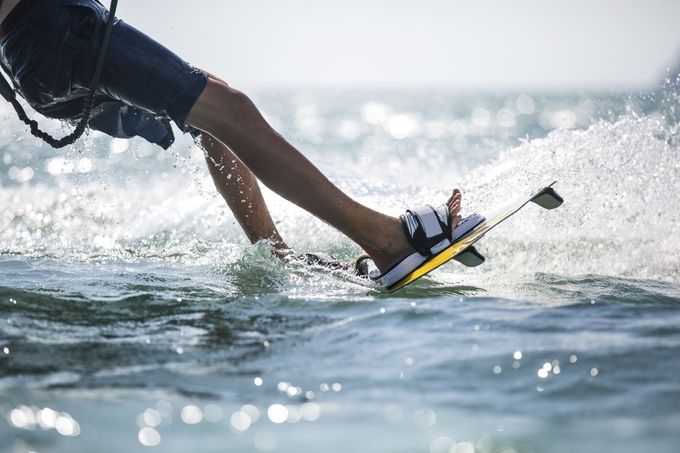Types Of Wakeboarding

Boat
It is possible to be towed by a boat or jet-ski using the wake to do tricks and surf/play on, this is how it all began, hence ‘wake’ boarding and can be practiced on lakes, the sea, rivers or any body of water with enough room for a fair tow. There are wakeboard and ski schools all over the UK that run beginner’s courses.
Cable
If you’re not lucky enough to know a boat owner or can’t afford to pay someone to tow you, overhead cable tows are the next best thing, and to some preferable. Cables have been developed from the technology and engineering behind drag lifts in ski resorts, they are cheaper to ride and more friendly to the environment.
There are two main forms of cable in the UK:
4/5 tower cables or full length cables – These are usually set up on a lake pulling riders around most commonly (in the UK) in an anti-clockwise direction at a continuous speed. Starting on the dock the cable operator will pass you a handle and off you go. Full cables can tow multiple riders at the same time so once you fall over, get your board off, swim to the edge and start again.
This is the cheapest way to wakeboard, it is super sociable but also something that is fun to do solo, most cable parks in the UK have a core bunch of regular riders that are all super keen and friendly, however if you have a spare hour and just want to hop on without hassle to land your next trick, full cable can be as anonymous as you want. Most wake-parks run beginners’ sessions too.
2 tower cables – These have become hugely popular over the last 5 years in the UK, especially for first time wakeboarders. Just two towers with one length of cable between, the towing handle is operated by a driver/instructor to go back and forth pulling the rider at variable speeds. There is only one rider at one time so when you fall, the handle will stop and wait for you. The surge in 2 tower cables in Europe recently is mainly due to the small space you need to operate… you can literally be taught in metres of water.
Ideal for everyone – pro snowboarder, non-swimmer, nervous wreck or just average Joe this is by far the safest and easiest way to learn.
Most 2 tower wakeparks in the UK have System 2.0 cables installed, most have at least one cable and many have beginner specific system 2.0 cables. Lagoon Watersports in Brighton as an example have 2 System 2.0 cables with obstacles and a beginners cable, they offer a good ‘learn to wake’ session.





